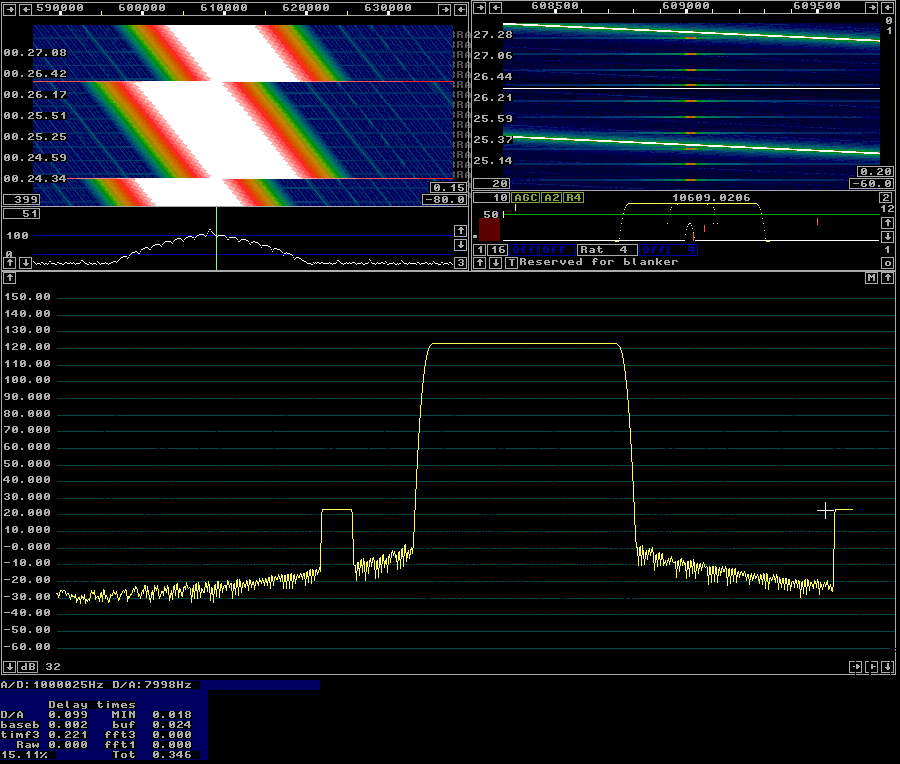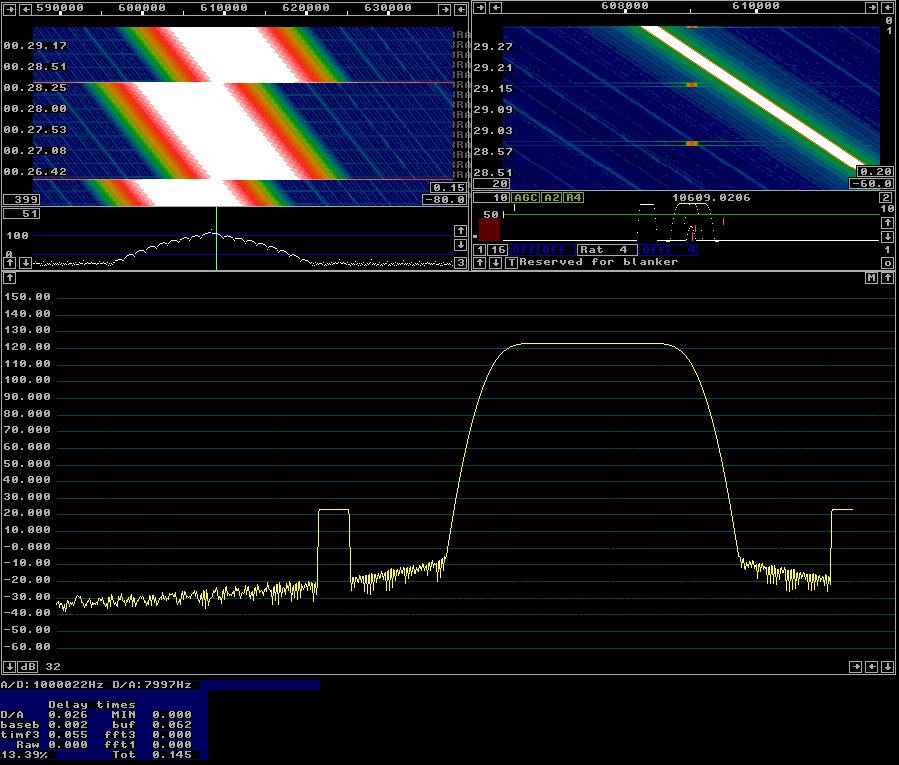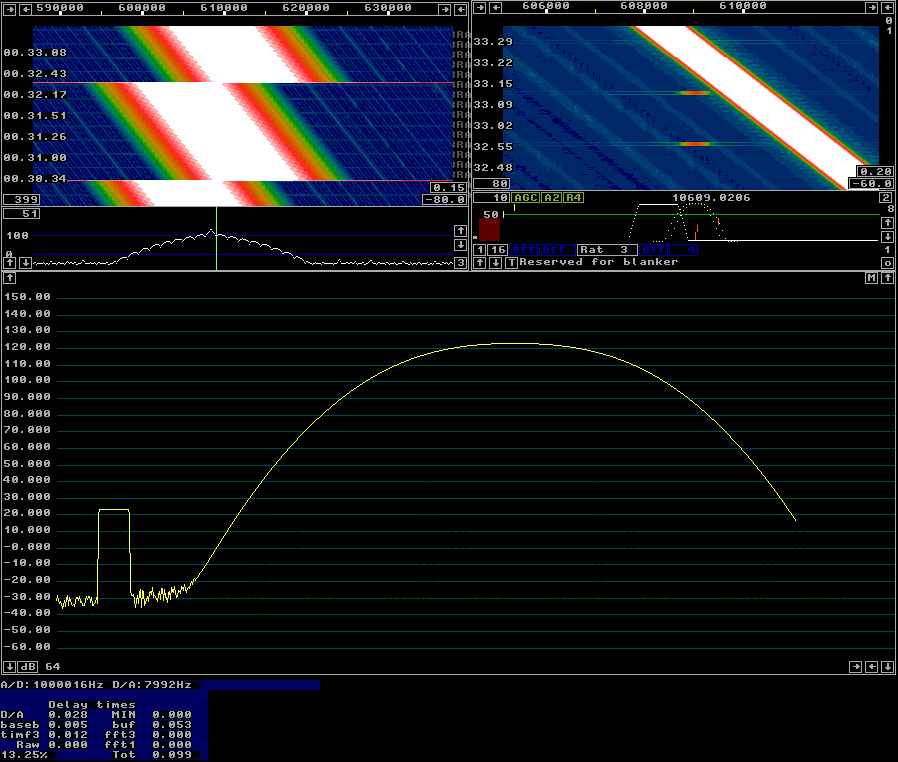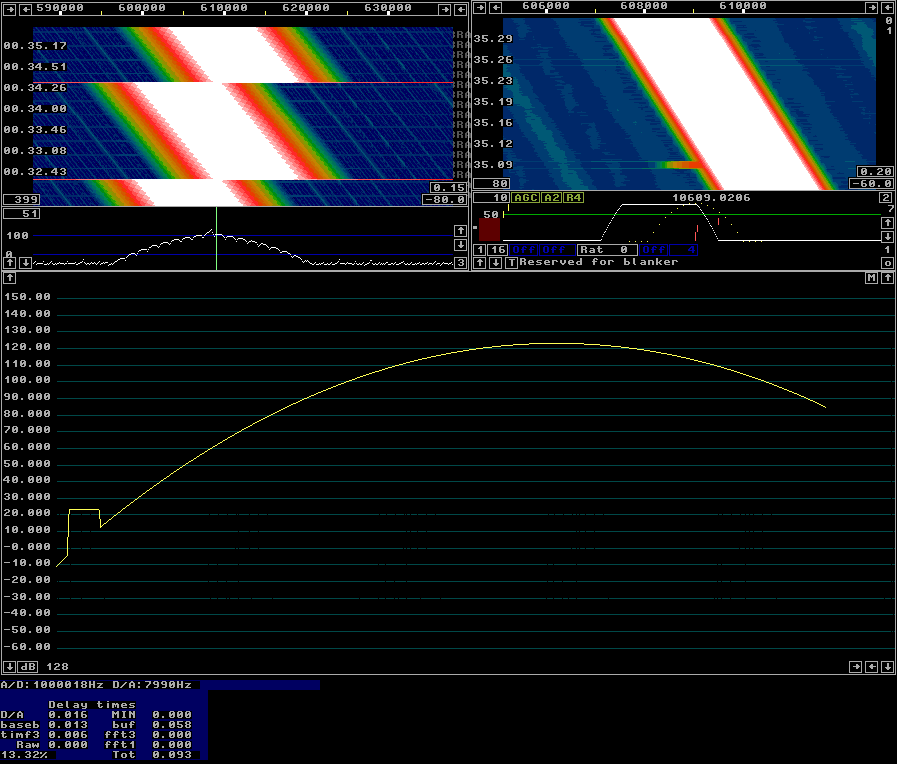
Fig 1. 500 Hz bandwidth in a filter that spans 260 ms gives near ideal filter response.
|
The screen dumps on this page are all generated with the internal
signal generator of Linrad at a sampling rate of 1 MHz and with
an fft1 size of 8192 using the erf(x) window to resample to a
timf3 sampling speed of 15625 Hz.
The keyed weak signal is 100 dB below the sweeping strong signal. It is keyed with a duty of 1:16 at a constant rate and serves as a reference for both time and amplitude. The keying rate can be evaluated from e.g. figure 1 where 9 periods is 143 pixels in the baseband graph. The period for one frequency sweep is 113 pixels so we can conclude that one frequency sweep corresponds to 7.11 keying periods. From the main waterfall graph one can get the sweep width which is 9.5 kHz and that gives the relevant timing information: The time between two consecutive keying pulses corresponds to a frequency sweep of 1.34 kHz. All screen dumps on this page have baseband filters with a bandwidth in the order of 500 Hz. The bandwidth controls in the baseband window are set for the steepest possible filter and the flat width is set a little different from graph to graph. The flat width does not affect the timing. In figure 1 the size for fft3 is 212 or 4096. This means that the baseband transform spans 262 milliseconds and therefore adds this amount of time to the delay from antenna to loudspeaker. The filter is close to ideal however, flat with very steep skirts. |

Fig 1. 500 Hz bandwidth in a filter that spans 260 ms gives near ideal filter response. |
|
The time between two consecutive keying pulses in the S-meter
graph in figure 1 is 513 pixels.
The -10 dB points are separated by 195 pixels while the -100 dB
points are separated by 219 pixels.
From this we can conclude that the -10 dB bandwidth is 509 Hz
and that the -100 dB bandwidth is 572 Hz.
Figure 2 shows a filter with a transform that span 65 ms. (N=10) The shape is still very good, but the time delay is still too long for transceiver operation with QSK. The - 10 dB bandwidth is 500 Hz while the -100 dB bandwidth is 720 Hz. |

Fig 2. 500 Hz bandwidth in a filter that spans 65 ms. |
|
Figure 3 shows a filter with a transform that spans 16 ms. (N=8)
The shape is reasonably good and the time delay perfectly
adequate for transceiver usage with QSK.
The -10 dB bandwidth is 575 Hz while the -100 dB bandwidth is 1.4 kHz.
The -3 dB bandwidth is about 320 Hz.
|

Fig 3. 500 Hz bandwidth in a filter that spans 16 ms. |
|
It is obvious in figure 3 that the response of the individual bins in
fft3 have a large influence on the filter shape.
The fft3 window is a Gaussian (N=8) so the frequency response of it
is also a Gaussian.
Figure 4 shows 500 Hz with the smallest transform size that can be used for this bandwidth. The transform spans 8 ms only and the Gaussian response due to the Gaussian window function generates the frequency response. The baseband bandwidth control is set to minimum so only a single FFT bin is used for the baseband filter. The -3 dB points are separated by about 260 Hz while the -10 dB bandwidth is 730 Hz and the -100 dB bandwidth is 2.3 kHz. |

Fig 4. A filter that spans 8 ms. Here only a single bin is selected for the filter and the shape is determined by the Gaussian window function. |
|
To SM 5 BSZ Main Page |